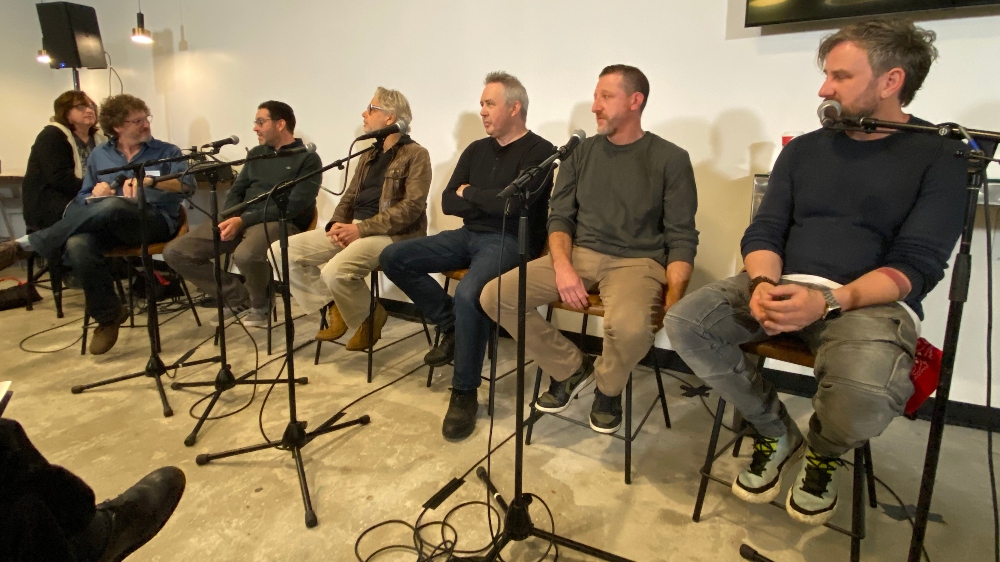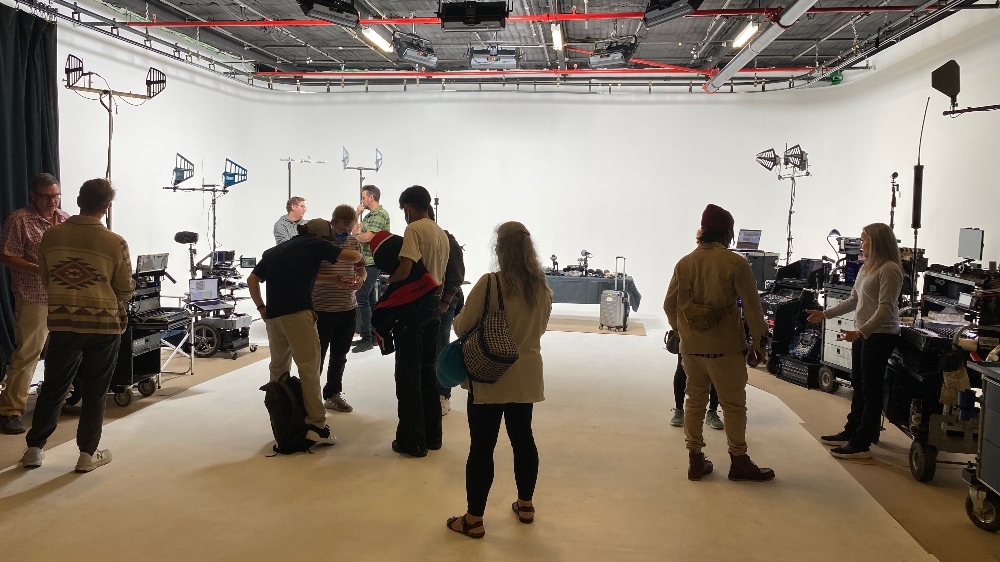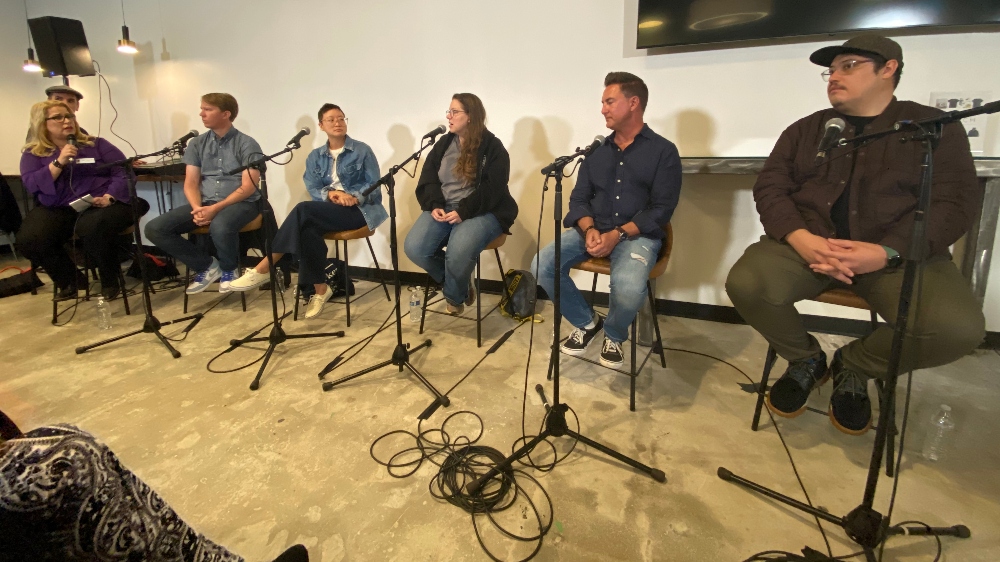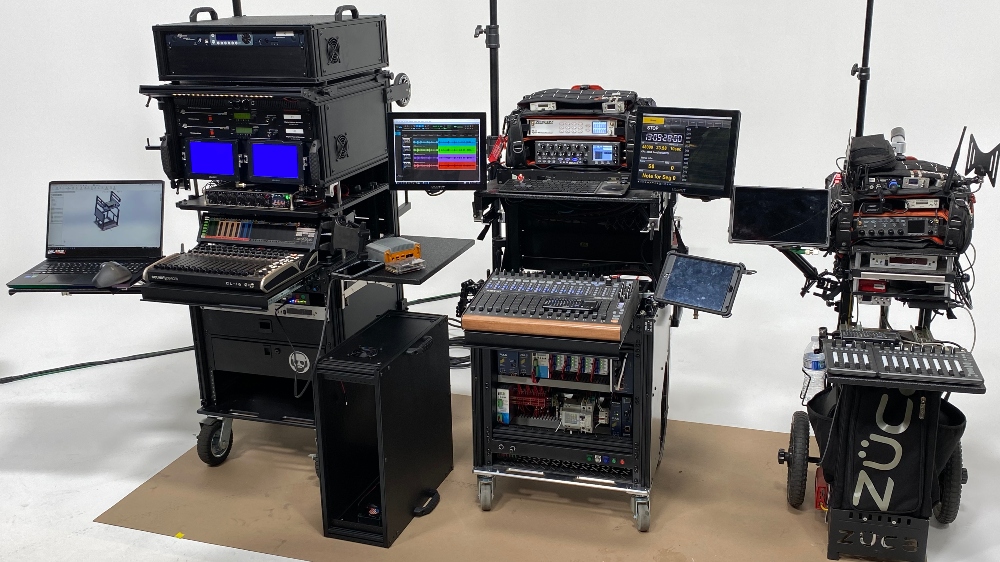Last Saturday afternoon, the Cinema Audio Society (CAS) and Motion Picture Sound Editors (MPSE) held an in-person event, The Sounding Board 2.0, which featured several panel discussions about the practical, creative and technical art of sound for picture.
The event emphasized the importance of sound artists, whose work on your favorite film or television show may go unseen, but is nonetheless vital to a project’s success. And fortunately, many of these talented artists were on hand to discuss the precise work that they do and explain its many intricacies.
The Sounding Board 2.0 proved to be a great networking event that allowed industry professionals to learn from each other and offer advice to those pursuing a career in sound. There were three panels that each tackled different topics — a film’s overall sound, the equipment used to create those sounds, and the on-set work done to record sound before it’s handed over to sound editors and mixers.

The Workflow: Mic to Mix panel went through the typical linear process of creating the type of sound that viewers find most prevalent when watching a movie or television show. Bob Bronow, CAS hosted the panel, which featured multiple Emmy winners. The panel included Production Mixer Devendra Cleary, CAS; Sound Supervisor Andrew Dawson; ADR Mixer Judah Getz, CAS; Music Editor Johnny Caruso; and Re-Recording Mixer Jonathan Greasley, CAS — all seasoned professionals who remain passionate about their work and eager to learn from one another about departments they weren’t as familiar with.
All of the panelists praised the Boom Mic Operators as more than just a guy holding a pole over the scene. The sound that boom operators collect can positively or negatively affect how these other artists do their jobs. The topic sparked an honest discussion that found the panelists praising each other, but also opening up about their own frustrations within the industry.
For example, transparency between all of the different sound departments would make everyone’s jobs easier, given the high-pressure, time-sensitive environments of their chosen field. All of the panelists said that they’re currently working in TV, which can come with a quick turnaround depending on the project. Smaller shows, usually non-streaming, have an average turnaround of three days, as recently-shot episodes often air later that week.
Streaming shows, especially high-concept projects, could be given up to 10 days. A problem they’ve run into with streaming, however, is that some streaming services release all or multiple episodes at once, which obviously accelerates the workload. A lot of pressure subsequently falls on ADR mixers, who have to account for many variables from other departments. ADR mixers prep by reviewing the footage they’ll be working with that day ahead of time, which could be thrown off by the actors not being made aware of what they have to record. These variables, even if out of the control of the ADR mixers, can reflect unfavorably and unfairly on their own work, as well as the work of other sound departments.

The Parade of Carts and Bags panel lived up to its name with an up-close look at the equipment that is used to edit and mix sound. The equipment was accompanied by the field recordists who use it every day. Brendan Sweeney, from Filmmakers Academy, moderated the panel, which featured Blas Kisic, Brandon Loulias, Delroy Cornick, Eric Ballew, Johnpaul Golaski, Korey Pereira, and Shawn Holden, CAS, all of whom had their own station set up and explained exactly what they do in the industry.
Pereira, a MPSE board member, had a table filled with mics and different filters and covers used to capture the desired effect. Again, the importance of how mics pick up sound was highlighted, as there are right and wrong ways to do it.
Brandon Loulias, an audio mixer who has worked with top directors such as Martin Scorsese, Michael Bay, and Steven Spielberg, has placed mics all over a scene to pick up each and every sound, as a sense of all-encompassing sound can make a scene feel more immersive. The art of audio mixing requires intuitive thinking, as the mixer must combine different technologies to create a unique sound. Some of these mixers have been in the business for decades, which has allowed them to track the evolution of different technologies and combine new and old techniques.
Meanwhile, throughout the film industry — and the day’s panels — there is an ongoing debate regarding analog vs. digital. Shawn Holden stated how much cleaner and smoother the new technology is but acknowledged the charm of using analog technology, as digital can often sound too perfect. For those pursuing a career in sound, this panel was the most informative, as it allowed attendees to see the technology up close and talk with the professionals afterward.

Karol Urban, CAS hosted the third and final panel, Our Partners in Sound Crime, which celebrated some of the unsung heroes of the sound industry. Much like the Mic to Mix panel, this one tracked the production process by highlighting all of these different jobs that intersect with one another. Panelists included Boom Operator Mitchell Gebhard, Utility Artist Rebecca Chan, Picture Assistant Ashley McKinney, Assistant Sound Editor David Stanke, and Mix Tech Steve Neal.
After hearing about the importance of the boom mic all day, it was great to hear from Gebhard, as boom mic operators control what and who goes where in order to capture the right sound for the editors. The best boom operators understand the type of light, and the light shaping, used by the production. Utilities are headed up by the utility artist, who works closely with the boom mic operator. The utility artist may operate another boom but is usually more concerned with controlling which mics go where. Typically, either the leg or the waist is the best place, but it all depends on what the talent prefers.
Once all that sound is captured on set, it’s given to the picture assistant who’s in charge of sound effects and turnovers with matching the sound from each new piece of footage. There’s a lot more of that in a more complex project like a superhero show or movie. All of these positions work with and assist the editorial team. The assistant sound editor assembles the dialogue and other sounds to ready it for the editorial team before the mix tech makes the final mix and cleans everything up.
Sounding Board 2.0 was a worthwhile event, one that was not just for those already working in the sound industry but for those less familiar with it and perhaps hoping to break in. The event provided a comprehensive understanding of the sound industry from all sides of the business, so even if you already appreciated the work these artists do, it offered a whole new perspective as well as an opportunity to learn about all of the different positions and how they complement one another.






